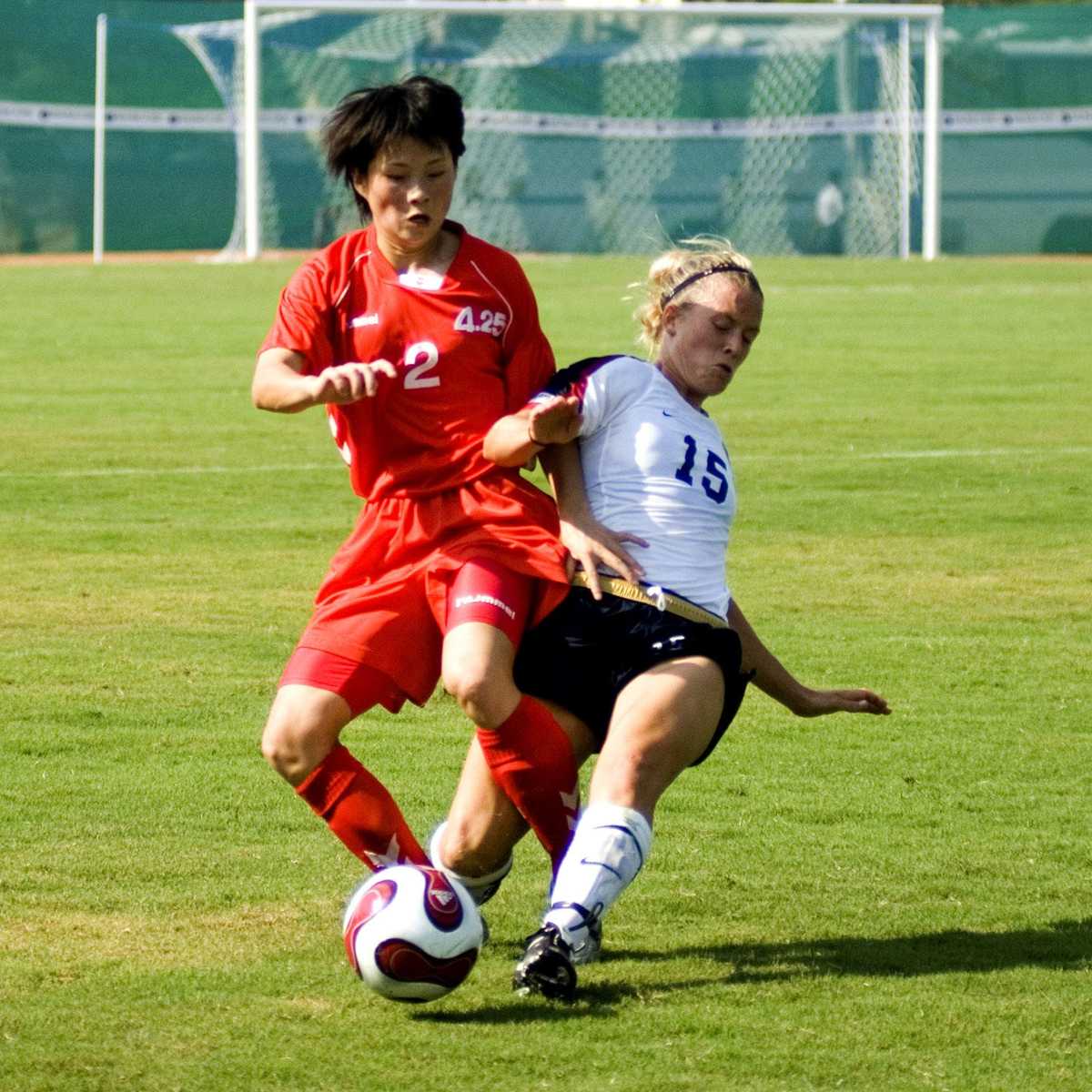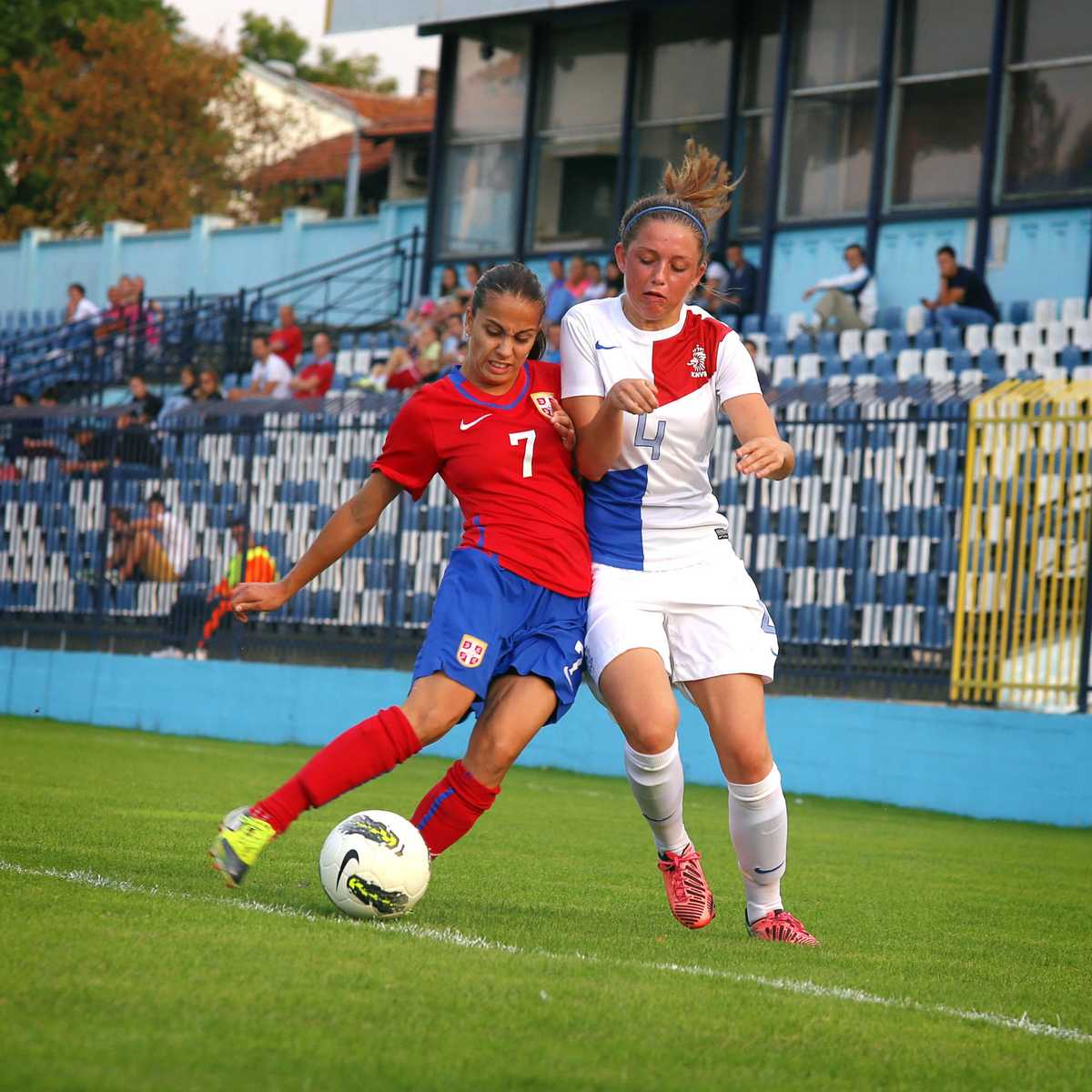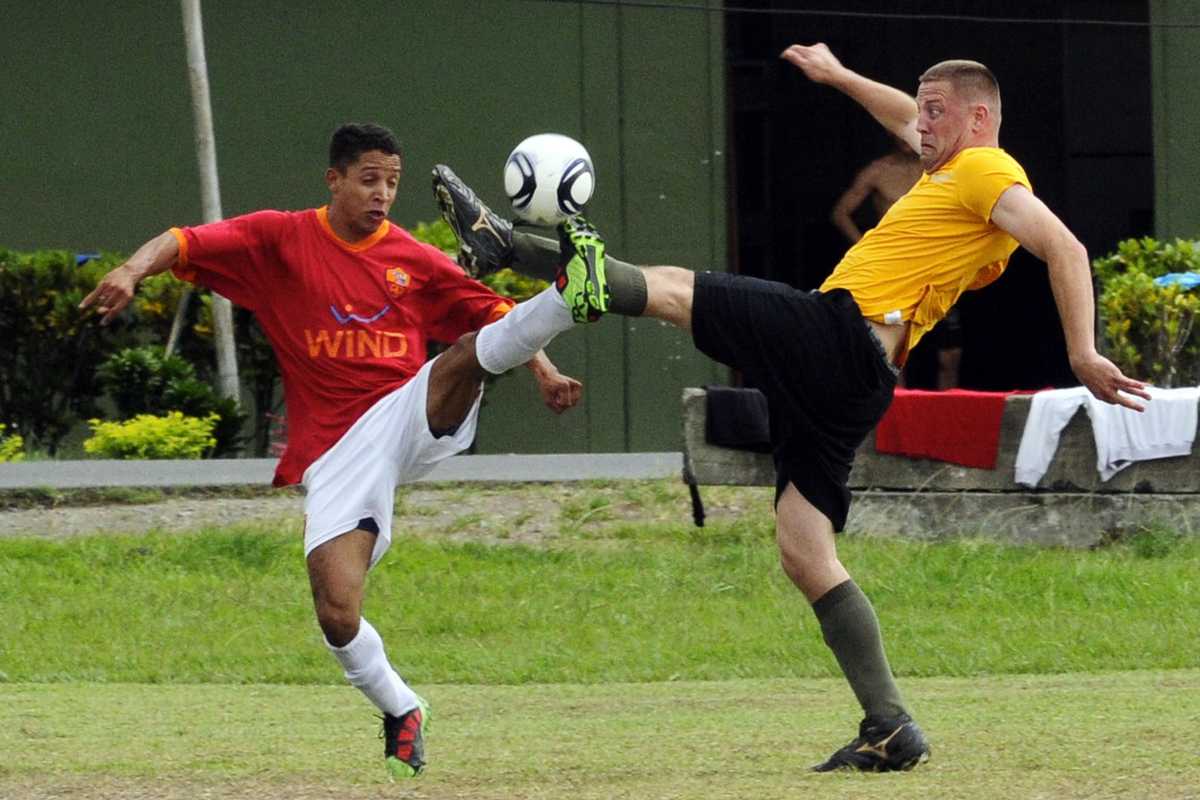Is Football a Contact Sport?

Football is a contact sport, but there are rules that regulate the amount of contact that will be tolerated. Contact in football was tolerated much more just a few decades in the past, but what is the status of contact in football in the present day?
What Is a Contact Sport?
Before we discuss the details of contact in the sport of football, it is important to define the term contact sport.
When asked to name a non-contact sport, most people will give examples such as golf, tennis, or swimming. While it is true that there is no contact between players in these sports, we need to consider that the players are rarely competing in the same positions, at the same time.
Conversely, sports such as American football, hockey, basketball, rugby, and football involve fast-moving players that can all inhabit the same positions at the same time. In these sports, contact between players will be inevitable, so can all be classed as contact sports. The differentiator is the amount, and type of contact that is deemed legal.
In sports like American football or rugby, contact is part of the essence of the game. If the contact was removed, it would result in a different game entirely.
In other contact sports, such as basketball or football, contact is not mandatory, will be less frequent, and more tightly regulated. Some contact will be accidental, and some will be deliberate. Contact could be light or could be excessive. The rules of each sport will determine what level of contact will be tolerated and what will be penalized.
Football Is a Contact Sport
We have established that football is considered a contact sport, but how much contact is tolerated within the rules of the game?
Law 12: Fouls and Misconduct, states that a free kick will be awarded if the referee considers that a player is being careless, reckless, or using excessive force when committing any of the following offences against an opponent:
- Charging
- Jumping
- Kicking, or attempting to kick
- Pushing
- Striking, or attempting to strike an opponent
- Tackling
- Tripping
The important thing to note here is that the decision is entirely down to the opinion of the referee. What is considered reckless by one referee, might be ruled acceptable by another. In an attempt to maintain consistency, the rules offer guidelines to define these terms, and what the recommended punishment should be.
- Careless is when a player shows a lack of attention or consideration when making a challenge or acts without precaution. No disciplinary sanction is needed
- Reckless is when a player acts with disregard to the danger to, or consequences for, an opponent and must be cautioned
- Using excessive force is when a player exceeds the necessary use of force and/or endangers the safety of an opponent and must be sent off

We can conclude that the legality of contact in football can be very subjective, and the views of the referee will almost always be challenged by players and supporters. However, we can summarize that contact is legal, providing that the player is making a genuine attempt to challenge for the ball, without putting their opponent's safety at risk.
Shielding the Ball
An essential technique in many sports, including football, is to shield the ball from your opponent. Shielding the ball involves positioning your body between the ball and the opposition player, in an attempt to stop the opponent from gaining possession of the ball. Using your body to shield the ball will clearly invite contact with opposition players, and is allowed under the rules of the game, with certain caveats.

The rules state that a player may shield the ball if the ball is within playing distance and if the opponent is not held off with the arms. If the ball is within playing distance, the player may be fairly charged by an opponent.
"All players have a right to their position on the field of play; being in the way of an opponent is not the same as moving into the way of an opponent."
It is important to note that shielding a ball that is within playing distance is not the same as impeding an opponent from reaching a ball that is not within playing distance. Holding or deliberately impeding an opponent with contact will result in a free kick in all circumstances.
The Shoulder Barge
When discussing contact in football, a term that often arises is the shoulder barge. This term is used to describe the act of a player pushing an opponent to the side by charging them with their shoulder. It is most often seen when two opposing players are running side-by-side together.

Most people perceive this as a legal form of contact, as the player is not using their arms or elbows to push their opponent. However, this is a misconception. Whilst it may be legal to use your shoulder to move an opponent off the ball, there is nothing in the rules specifically stating that this is a legal or an illegal manoeuvre. It will still fall under the consideration of the referee to determine if the player is being reckless or using excessive force.
Accidental Contact
There are many scenarios in football where contact can be accidental. It is common for players to attempt tackles, jump for headers, or simply attempt to kick the ball which can result in accidental contact, and sometimes serious injury. A classic example is the '50/50' challenge. This is when two fully committed players arrive at a tackle at the same time. Both players can have the best intentions, but the resulting contact can still cause injury to one or both players.

Just because the contact was accidental, does not mean that an offence may not have been committed. If a tackle or challenge is deemed by the referee to endanger the safety of an opponent, it must be sanctioned as serious foul play, even if it was not the intention of the player.
"Any player who lunges at an opponent in challenging for the ball from the front, from the side or from behind using one or both legs, with excessive force or endangers the safety of an opponent is guilty of serious foul play."
A good example of this is a slide tackle. It is a common misconception that if a player wins the ball whilst making a tackle, then the tackle must be considered legal. However, if the player dangerously follows through after the ball is won, and collides with the opposition player, then the referee can consider this a foul. Winning the ball is not an excuse for dangerous play.
FAQs
Is a shoulder barge legal?
Yes, a shoulder barge can be considered legal, but only if the ball is within playing distance, and the player is not careless, reckless, or using excessive force.
Is football a contact sport?
Yes, football is a contact sport, however, players must not be careless, reckless, or use excessive force, as determined by the referee.